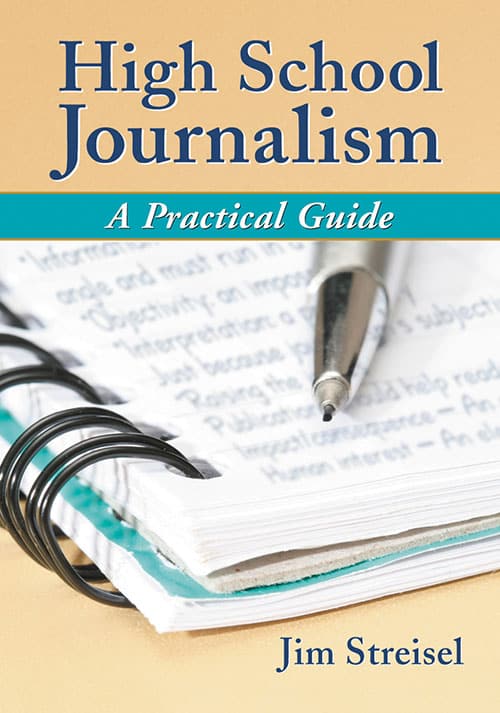High School Journalism
A Practical Guide
$29.95
In stock
About the Book
High school journalists share the same objectives as professional reporters—finding the story, writing the story, and packaging the story so that it appeals to an audience. Understanding how to best accomplish these objectives is key to the student on the newspaper, yearbook or Web site staff, but the fundamental art of storytelling and story presentation are not always at the center of high school journalism classes. Student journalists must first understand that storytelling, at its most basic level, is about people, and that understanding the audience is essential in deciding how to present the story. This handbook for high school journalists and teachers offers practical tips for all elements of school journalism. The author covers the essential components that students must understand: information gathering, writing, standard and alternative coverage and packaging. Students will find valuable information about identifying news, interviewing, research, narrative writing style, editing, visual presentation and layout. The book also covers the legal rights of student journalists, objective vs. opinion writing, staff planning and organization and Web–based journalism. Each chapter includes study guides for practical applications of the concepts discussed.
Instructors considering this book for use in a course may request an examination copy here.
About the Author(s)
Bibliographic Details
Jim Streisel
Format: softcover (7 x 10)
Pages: 232
Bibliographic Info: 83 photos, index
Copyright Date: 2007
pISBN: 978-0-7864-3060-4
eISBN: 978-0-7864-5502-7
Imprint: McFarland
Table of Contents
Acknowledgments vi
Introduction: Storytelling for a Sophisticated Audience 1
Section I: Information Gathering
What Are the Stories and How Do You Find Them? 11
1. Broccoli: What Is News? 13
2. Pepperoni Pizza: Where Are the Stories? 25
3. Gold Coins: What Is the Role of Observation? 34
4. Interviews: Inquisition or Conversation? 45
5. Research: Is Data More Than a Four-Letter Word? 60
Section II: Writing
The Lifeblood of Your Publication 71
6. The Fall of the Pyramid: The Readable Narrative Style 73
7. Editing: It’s Not Just Proofreading Anymore 91
8. Dissection: How the Pieces of Writing Work Together 104
Section III: Alternative Coverage
Presenting Your Information Visually 111
9. A Thousand Words: How to Reach Readers Who Don’t Want to Read 113
10. Alternative Coverage 101: A Practical Guide to Visual Presentation 125
Section IV: Packaging
Putting the Pieces Together 133
11. Design 101: Page Creation 135
12. The Total Package: Combining Stories and Visuals 155
Section V: Potpourri
The Rest of the Story 181
13. The Law: Legal Rights of Student Journalists 183
14. Everybody’s Got One: When and Where to State Your Opinion 198
15. Yadda, Yadda, Yadda: Staff Planning, Organization, the Web and Beyond 210
Index 221
Book Reviews & Awards
- “useful”—Communication Booknotes Quarterly
- “most valuable”—ARBA
- “recommended”—Library Media Connection





